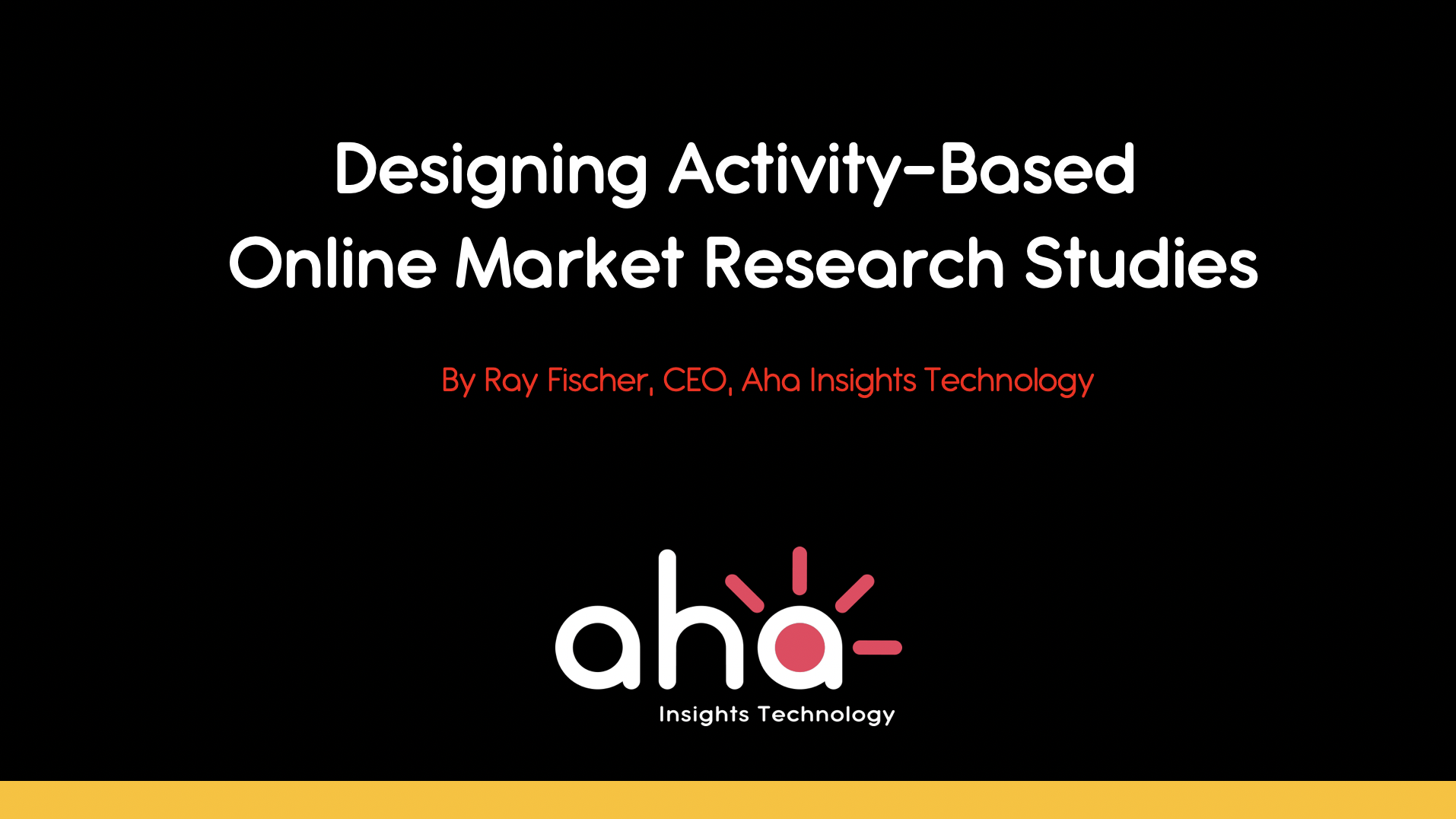Designing Activity-Based Online Market Research Studies in an Agile World
I hear two words A LOT when clients are talking about the insights they’re seeking…ACTIVATE and AGILE. Let me throw in another “a” word (you gotta love alliteration) that I think helps these clients get those sorts of insights…ACTIVITY.
aha insights technology (hmmm…the alliteration continues) is an Activity-Based platform. Because we’re asking people to do activities we gain insights in two really important ways—through their behavior and their underlying emotions/identity. These two get at more unconscious motivations that are constantly in play and are a much more accurate reflection of why they do what they do. Qualitative platforms (and in-person groups) that focus on discussion and opinions don’t get to this level. Sadly, this turns some people off of doing qualitative.
When designing a study on the aha online platform, though, you can create an Activity that focuses on behavior and a different Activity that focuses on underlying emotions/identity. I would always think about combining these two different types of activities in a single study to get at someone’s true motivation in an active, agile way.
Behavior
Asking a study participant to do something gives us an opportunity to see how they act in a range of situations or tasks. We might ask them to take videos and/or photos as they’re going through a store or shopping situation. These images reflect what they notice, how they behave and what motivates them during this experience. This is different—and more accurate—than asking them what they typically notice when they go through a store. We are—as in ethnography—using their behavior as stimulus. We may observe that they see nothing but end-aisle displays, or close-up shots of price stickers, or certain colors or types of signs. These are all data that might have meaning to what we’re trying to learn but they would never be able to voice if asked the question.
If we’re asking them to upload an image, video a situation or a place in their home or do a diary that is tracking their use of a product, I see these tasks as behavior-based, as well. Again, we’re asking them to do something—not just offer an opinion. And if we can observe this act of doing then we can quickly gain deeper insight that they probably wouldn’t have told us in direct questioning.
Underlying Emotions/Identity
Activities can be very creative yet not so challenging that people aren’t up to the task. We can ask them to write a story that illuminates a particular emotion or situation, and our storytelling template is right there to inspire them to write a great story. Getting people to tell stories about a situation or an emotion is much more useful than asking them direct questions. In a story, people develop characters, introduce drama, and provide resolution that reveals more about who they are and how they feel than any other form of questioning can. This is the true beauty of projective techniques.
I remember doing focus groups back in the day and asking people to draw a picture of something. The groans. The trepidation. The threat of shame. On aha, study participants can draw, create collages and engage with other visual tasks that: 1) only they see (this is important) and 2) use ResTech tools that help them be more creative in an easier, more intimate, and more satisfying way. Once again, the way these projective activities are completed will deliver a truer representation of what motivates them.
Oh…and these types of creative activities ACTIVATE their minds. Their story or drawing comes from a different part of their brain that houses their underlying motivations.
The aha activity-based platform has the potential to help you design studies that allow YOU to ACTIVATE and be AGILE when it comes to discovering meaningful insights. You will get to underlying behaviors and motivations more quickly and find that study participants will always be more engaged…because we’re asking them to do something and create something. Together, these can make for a truly breakthrough study.
Stay tuned for my next blog about analyzing Activity-Based studies. (The A’s just keep coming).





